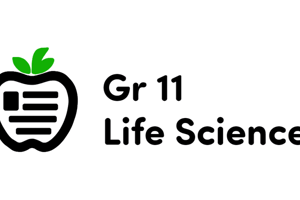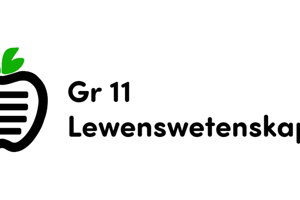Podcast
Questions and Answers
Which of the following factors can contribute to the emergence of new strains of pathogens?
Which of the following factors can contribute to the emergence of new strains of pathogens?
- Increased hospital admissions due to a pandemic
- Development of new antigenicity in pre-existing pathogens (correct)
- Globalization of trade and increased urbanization
- Introduction of a pathogen into a community with no immunity
What is the primary mechanism responsible for gas exchange between organisms and their environment?
What is the primary mechanism responsible for gas exchange between organisms and their environment?
- Osmosis
- Active transport
- Facilitated diffusion
- Diffusion (correct)
What is a key feature of a respiratory surface that enhances efficient gas exchange?
What is a key feature of a respiratory surface that enhances efficient gas exchange?
- A small surface area to minimize energy expenditure
- A dry surface to prevent water loss
- A thick layer of cells to provide structural integrity
- A large surface area to maximize the rate of diffusion (correct)
How does the globalization of trade contribute to the spread of infectious diseases?
How does the globalization of trade contribute to the spread of infectious diseases?
Why is a concentration gradient essential for gas exchange in organisms?
Why is a concentration gradient essential for gas exchange in organisms?
What is the main function of antibiotics?
What is the main function of antibiotics?
What is the primary mechanism by which bacteria develop resistance to antibiotics?
What is the primary mechanism by which bacteria develop resistance to antibiotics?
How does herd immunity work?
How does herd immunity work?
Which of the following is NOT a characteristic of an outbreak?
Which of the following is NOT a characteristic of an outbreak?
How does HIV infection affect the immune system?
How does HIV infection affect the immune system?
What is the difference between bactericidal and bacteriostatic antibiotics?
What is the difference between bactericidal and bacteriostatic antibiotics?
What is the role of memory cells in the immune response?
What is the role of memory cells in the immune response?
Why are vaccines effective in preventing disease?
Why are vaccines effective in preventing disease?
What happens during the refractory period of an action potential?
What happens during the refractory period of an action potential?
Which of the following is NOT a factor that influences the speed of a nerve impulse?
Which of the following is NOT a factor that influences the speed of a nerve impulse?
What is the role of the sodium-potassium pump in maintaining resting potential?
What is the role of the sodium-potassium pump in maintaining resting potential?
What is the difference between an excitatory post-synaptic potential (EPSP) and an inhibitory post-synaptic potential (IPSP)?
What is the difference between an excitatory post-synaptic potential (EPSP) and an inhibitory post-synaptic potential (IPSP)?
What is the role of calcium ions (Ca+) in synaptic transmission?
What is the role of calcium ions (Ca+) in synaptic transmission?
What is the function of acetylcholinesterase in the synaptic cleft?
What is the function of acetylcholinesterase in the synaptic cleft?
Which of the following is an example of an effector cell?
Which of the following is an example of an effector cell?
What is the correct order of events in synaptic transmission?
What is the correct order of events in synaptic transmission?
Why is the inside of a neuron negatively charged relative to the outside at resting potential?
Why is the inside of a neuron negatively charged relative to the outside at resting potential?
Which of the following statements about graded potentials is TRUE?
Which of the following statements about graded potentials is TRUE?
Flashcards
Outbreak Definition
Outbreak Definition
An outbreak occurs when a pathogen enters a community lacking immunity.
Pathogen Mutation
Pathogen Mutation
New strains of pathogens arise when existing ones change antigenically.
Factors in Outbreak Spread
Factors in Outbreak Spread
Factors like globalization and urbanization can enhance outbreak transmission.
Gas Exchange Process
Gas Exchange Process
Signup and view all the flashcards
Respiratory Surface Requirements
Respiratory Surface Requirements
Signup and view all the flashcards
Secondary Immune Response
Secondary Immune Response
Signup and view all the flashcards
Immunodeficiency
Immunodeficiency
Signup and view all the flashcards
AIDS
AIDS
Signup and view all the flashcards
HIV Infection
HIV Infection
Signup and view all the flashcards
Zoonosis
Zoonosis
Signup and view all the flashcards
Antibiotics
Antibiotics
Signup and view all the flashcards
Antibiotic Resistance
Antibiotic Resistance
Signup and view all the flashcards
Vaccines
Vaccines
Signup and view all the flashcards
Membrane Potential
Membrane Potential
Signup and view all the flashcards
Resting Potential
Resting Potential
Signup and view all the flashcards
Action Potential
Action Potential
Signup and view all the flashcards
Depolarization
Depolarization
Signup and view all the flashcards
Repolarization
Repolarization
Signup and view all the flashcards
Nerve Impulse
Nerve Impulse
Signup and view all the flashcards
Synapse
Synapse
Signup and view all the flashcards
Neurotransmitter
Neurotransmitter
Signup and view all the flashcards
Acetylcholine
Acetylcholine
Signup and view all the flashcards
Graded Potentials
Graded Potentials
Signup and view all the flashcards
Study Notes
Homeostasis
- Maintains a constant internal environment within physiological limits.
- Preserves equilibrium within cells.
- Uses both nervous and endocrine communication systems.
- Disease occurs if homeostasis isn't maintained.
Negative Feedback
- A feedback loop uses an outcome as input.
- Feedback loops can be positive (reinforce input) or negative (oppose input).
- Negative feedback maintains equilibrium.
Vital Functions
- Internal equilibrium maintained by regulating:
- Blood glucose (75-95 mg/dL).
- Body temperature (36-38°C).
- Blood pH (7.35-7.45).
- Blood osmotic concentration (varies with body size).
- Physiological activities affect these levels.
- Circadian rhythms.
- Physical activity.
- Eating and fasting.
Blood Sugar Regulation
- High blood glucose damages cells due to hypertonicity.
- Blood sugar checked by chemoreceptors.
- Pancreatic hormones control blood glucose levels.
- Insulin lowers blood glucose.
- Glucagon raises blood glucose.
Thermoregulation
- Vasodilation for heat loss (promotes blood flow).
- Sweating for evaporative cooling (evaporation absorbs heat).
- Vasoconstriction to maintain heat (reduces blood flow).
- Shivering produces heat.
- Hair erection traps warm air to conserve heat.
- Uncoupled respiration in brown adipose tissue produces heat.
Circadian Rhythms
- Physiological responses to a day-night cycle.
- Controlled by melatonin from the pineal gland.
- Light inhibits melatonin.
- Melatonin promotes sleep in diurnal animals, activity in nocturnal animals.
- Useful for jet lag management.
Physical Exertion
- Epinephrine (adrenaline) is a stress hormone.
- Released from adrenal glands.
- Prepares the body for exertion.
- Elevates heart rate to pump more blood.
- Dilates arterioles to skeletal muscles.
- Increases ventilation for more oxygen uptake.
Digestive Control
- Food movement controlled by voluntary and involuntary nerve pathways.
- The CNS initiates swallowing and egestion.
- Peristalsis (involuntary movement) involves longitudinal smooth muscles.
Body Systems Integration
- Interactions between organ systems create new functionalities.
- Coordination between various organ systems is essential for multicellular organisms.
Communication
- Animals have two communication systems: nervous and endocrine.
- Nervous system transmits electrochemical impulses.
- Endocrine system releases hormones directly into the bloodstream.
Receptors
- Specialized cells that detect specific stimuli.
- Photoreceptors detect light.
- Thermoreceptors detect temperature changes.
- Chemoreceptors detect chemicals.
- Mechanoreceptors detect pressure, touch, and stretch.
Effectors
- Organs or cells that respond to stimuli.
- Muscles (by contraction).
- Glands (by secretion)
Nervous System
- Two main parts:
- CNS (brain and spinal cord) - information processing center.
- PNS (peripheral nerves) - links CNS to receptors and effectors.
- Nerve cells (neurons) transfer information.
- Stimulus-response pathways.
- Electrical impulses from receptors to CNS, then to effectors via motor neurons.
Spinal Cord
- Column of nerve fibres with connections to the central processing unit (brain).
- Acts as an integration center for reflex actions (involuntary responses).
- Does not require communication with the brain for some actions.
Reflex Actions
- Rapid, involuntary responses to stimuli, using skeletal muscles .
- Reflex arcs bypass the brain, using only the spinal cord.
- An example is pain response.
Brain
- Integrates and coordinates bodily functions, including memory, emotions, and consciousness.
- Three main parts:
- Cerebrum – high-level functioning.
- Cerebellum - balance, coordination, proprioception.
- Brainstem - connects brain to spinal cord, controls involuntary processes.
Endocrine System
- Network of ductless glands releasing hormones into the bloodstream
- Hypothalamus - homeostasis control center, connects nervous and endocrine systems.
- Pituitary gland - regulates other endocrine glands.
Immune System
- Protects against pathogenic infections
- Surface barriers prevent pathogen entry.
- Innate immunity (non-specific and non-adaptive), responds to all pathogens similarly.
- Adaptive immunity (specific and adaptive) responds to specific pathogens and creates memory.
Pathogens
- Agents causing disease – can be cellular or acellular.
Disease
- Illness with characteristic symptoms, caused by various factors.
Immunodeficiency
- Weakened immune system; susceptibility to infections.
Zoonotic Diseases
- Infectious diseases transmitted between animals and humans.
Antibiotics
- Biological compounds targeting prokaryotic metabolism.
Antibiotic Resistance
- Some bacteria develop resistance to antibiotics.
- Broad spectrum use encourages resistance.
Vaccines & Immunization
- Weakened pathogens that trigger an immune response and immunity.
- Create memory cells for a faster response upon re-exposure.
- Herd immunity protects those not immunized.
Respiratory System
- Exchange of gases with the environment.
- Essential for cellular respiration.
- Specialized surfaces maximizing gas diffusion.
Circulatory System
- Transports materials around the body.
- Contains three types of blood cells: red blood cells, white blood cells, and platelets.
- Blood is the fluid transporting materials.
- Blood vessels (arteries, veins, capillaries) transport blood.
- Heart, the pump, drives blood circulation.
Heart
- A muscular pump for blood movement through the body.
Blood Vessels
- Arteries take blood away from heart, high pressure.
- Veins carry blood back to heart, low pressure.
- Capillaries are small vessels for material exchange.
- Valves prevent backflow in veins.
Pulse
- Blood surge through arteries that correspond with heart contractions.
Lung Capacity
- Measurement of air volumes in the lungs.
Nerve Impulse Sped
- Impulse speed depends on axon diameter and myelination.
- Myelination allows faster jumps along nerve fibers.
Synapses
- Junction between neurons, or neuron and effector, where signals are transmitted.
Membrane Potential
- Difference in charge across a neuron's membrane.
- Essential for electrical signals in neurons.
Action Potential
- Rapid change in membrane potential that triggers a nerve impulse.
- Depolarization and repolarization are steps in the action potential.
Neurotransmitters
- Chemicals that transmit signals across synapses.
- Important for muscle contractions and other functions.
Graded Potentials
- Changes in membrane potential that don't reach the action potential threshold.
Covid-19
- Novel coronavirus, caused a global pandemic
- Epidemiologists analyzed data to manage the spread (percentage change and percentage differences).
Studying That Suits You
Use AI to generate personalized quizzes and flashcards to suit your learning preferences.




